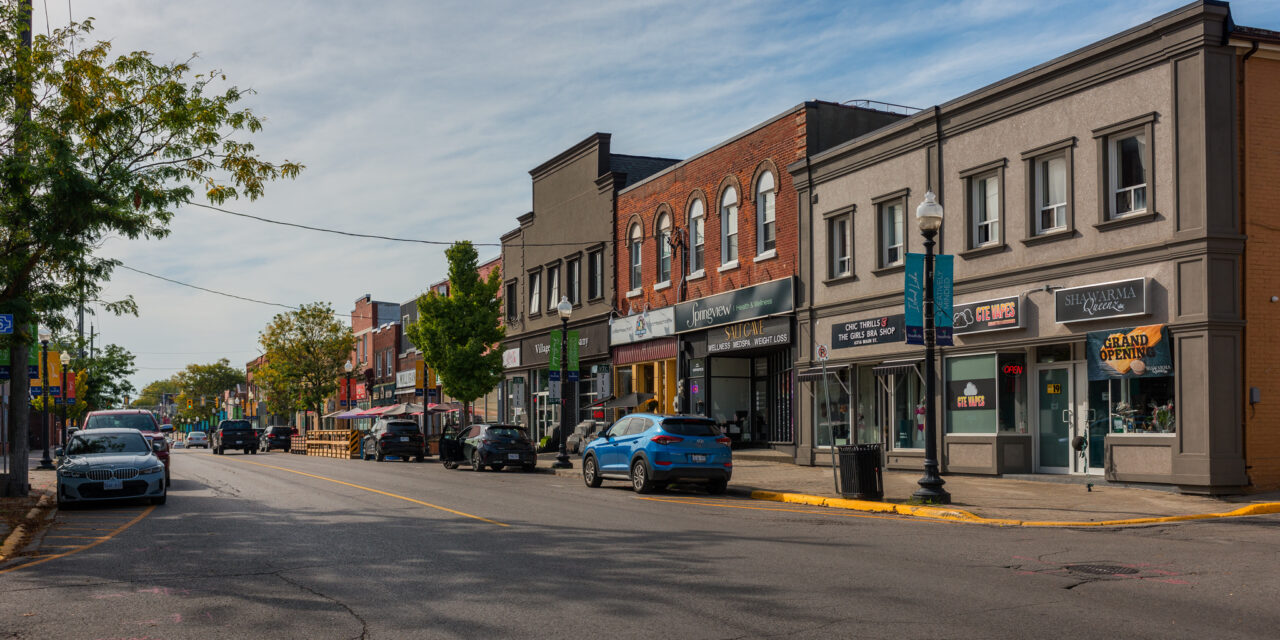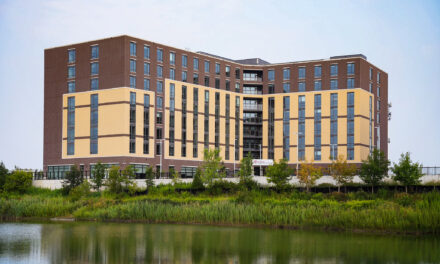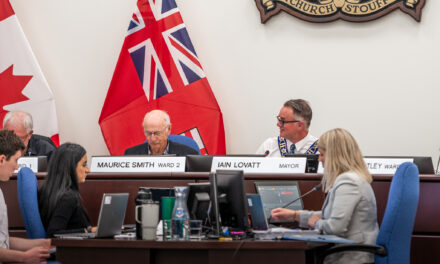- Stouffville is establishing a Village of Stouffville Advisory Committee (VSAC) to support and promote Downtown Main Street and its businesses.
- The move follows the Chamber of Commerce’s June decision to end an existing memorandum of understanding with the Town.
- That agreement saw the Chamber acting in a similar supportive capacity for the Village of Stouffville area.
- VSAC will also “facilitate visioning, planning, and coordination” on area projects and events, according to the Town.
- Revenue from the existing special levy for Village businesses will be transferred to the committee to fund their efforts.
VSAC will “work to identify opportunities and barriers that contribute to or detract from the Village of Stouffville as a vibrant place to live, work, and play,” states a recent Staff report. It will promote the area as “a shopping, dining, cultural, and tourism destination.”
The committee will have seven members, including five public members and the Ward 5 and Ward 6 Councillors who represent the Village area. In filling public roles, preference will be given to Village business and property owners, followed by area residents and then the public at large.
In many ways, VSAC’s objectives will be similar to those of a Business Improvement Area (BIA). BIAs bring business and property owners together with the municipality “to organize, finance, and carry out physical improvements and promote economic development in their district,” the Government of Ontario explains.
A BIA is not a new concept in Stouffville. The Town enacted a local BIA in 1980, which led to a supportive levy for included businesses, another Staff report details. The Downtown Stouffville Working Group (DSWG) was then formed in 2006 “to bring stability to the Downtown area and develop a strategic, dedicated approach to Downtown revitalization.”
In 2009, a Provincial grant opportunity for revitalization funding led to the BIA being consolidated into the DSWG. After the grant program ended, the DSWG’s partnership with the Town continued until 2019, when it transitioned into a Staff working group.
The following year, the Stouffville Chamber of Commerce (the Chamber) expressed interest in taking over the DSWG’s role. After the Village of Stouffville rebranding in mid-2021, a memorandum of understanding (MOU) was signed between the Town and the Chamber, granting it BIA-styled governance of the Village area.
Stouffville provided operating funding to the Chamber in an amount equal to the special levy paid by businesses within the Village. In 2023, the levy provided a total of $75,870. However, in June, the Chamber notified the Town of its intention to end the MOU at the end of 2024.
Bullet Point News spoke with Stouffville Chamber of Commerce Executive Director Christian Buhagiar, who assumed his role in January 2024. He said that, through discussions with the Chamber’s Board of Directors, the organization recognized their problematic position of “wearing two hats.”
One of those hats represents the Chamber’s work in serving business interests throughout Stouffville. The other is its role as the Village’s effective BIA under the MOU. While both focus on economic development, Buhagiar noted that chambers exist to support the overall sustainability of member businesses. BIAs, on the other hand, are more about growing and enhancing their geographic area and environment.
“I’ve had people who are wiser than me say that a BIA is concerned with everything that happens up until the front door of a business,” Buhagiar elaborated. “From the Chamber’s perspective, we’re interested in those things, but we’re also interested in what happens once you cross into that business.”
“The dichotomy, this dual role that we had, was identified as a significant factor in why the Chamber wasn’t able to deliver on what the vast majority of its members wanted and needed: for us to be a Chamber in support of all Stouffville businesses,” he added.
According to Buhagiar, MOU obligations related to conducting large events also became a significant resource constraint: “And I don’t even mean the dollars and cents of it, although that’s a part of it… It’s really the staff time and energy. And because of that, we lost a lot of our focus on the other things that a Chamber should have been doing.”
The Chamber also took notice of what Buhagiar referred to as “market confusion.” In his view, many Downtown Main Street businesses didn’t realize they were part of a larger chamber, while businesses outside the Downtown area saw them only as the Village BIA. From the Chamber’s perspective, this created an obstacle to their growth.
“All of these things combined suggested that we needed to exit the MOU,” Buhagiar concluded. “So we had a number of conversations with the Town, and ultimately, through a unanimous vote of our Board, we decided to terminate it early—which we were allowed to do as part of the agreement.”
As a result, a key Council objective after returning from the summer recess was deciding how to continue the Town’s support of Stouffville’s Downtown in 2025. The first direction considered was reestablishing a BIA, which was discussed during the September 25 meeting.
Concerns over lengthy implementation timelines and the amount of Staff resources required were raised by Councillors Sue Sherban and Rick Upton. With the MOU ending, Sherban was keen to identify a prompt replacement. “If we don’t have something to immediately fall in its footsteps, I fear that the downtown will be flailing on its own,” she said during the meeting.
Noting that it could take as long as a year to see an operational BIA, Upton put forward the final motion that resulted in Staff moving forward with the VSAC.
As Buhagiar looks ahead to a greater focus on the Chamber’s obligations, he noted that the VSAC could facilitate more efficient use of the Downtown’s special levy. No remuneration has been proposed for VSAC members, and a greater portion of the levy’s revenue could be made available without the need to pay Chamber staff.
For the Committee to access those funds, they will need to submit an annual budget and workplan to Council for their approval. Town resources will also be made available as needed, including a Legislative Services staff member who will serve as the committee’s secretary and an Economic Development department liaison.
Staff hope to see the first VSAC meeting held in February of next year.





